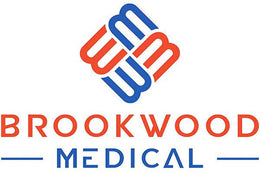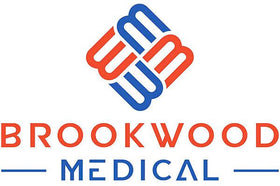Mastering Mask Regulations: Your Guide to Compliance

Frequently Asked Questions
1. Why are masks important during the pandemic?
2. What guidelines does the CDC provide for mask usage?
3. What are the different types of face masks?
4. How should masks be properly maintained?
5. What are some common myths about masks?
The global pandemic has ushered in a new era of health consciousness, enhancing the demand for safety equipment, especially multi-layer face masks. As regulations and guidelines evolve, it is vital to stay informed and compliant to ensure the safety of yourself and those around you. This guide dives deep into understanding these mask regulations and guidelines.
The Importance of Masks
Understanding why masks are essential is the first step in complying with regulations. Masks serve as a barrier to respiratory droplets that may contain viruses. By wearing multi-layer face masks, you not only protect yourself but also help prevent the spread to others, decreasing overall transmission rates.
Health Guidelines from the CDC
The Centers for Disease Control and Prevention (CDC) has laid out clear guidelines about mask usage. They emphasize the importance of wearing masks in crowded or indoor settings where social distancing is not feasible. According to the CDC, multi-layer face masks are particularly effective as they provide better filtration and reduce the risk of spreading airborne pathogens.
State Laws and Local Regulations
As mask regulations can vary significantly from one location to another, it is crucial to familiarize yourself with local guidelines. Some states have mandated the use of face masks in all public places, while others may have more relaxed recommendations. Ensure you stay updated with your state's latest requirements regarding masks.
Understanding the Terminology
Before we delve deeper, it's helpful to clarify some terminology related to face masks:
- Single-layer Mask: Typically made from one layer of fabric; may provide limited protection.
- Multi-layer Face Masks: Composed of multiple layers, designed to enhance filtration efficiency.
- Disposable Masks: Used for one-time wear, generally made from non-woven materials.
- Reusables: Can be washed and reused multiple times.
What Makes Multi-layer Face Masks Effective?
Multi-layer face masks have become popular due to their enhanced safety features. But what exactly makes them more effective?
Filtration Efficiency
Multi-layer face masks provide better filtration of particles compared to single-layer designs. The multiple layers can trap smaller droplets and particles that might otherwise escape, ensuring a more secure fit. Additionally, the materials used in these masks can contribute to their effectiveness. Fabrics such as cotton, polyester, and blends can be strategically layered to maximize protection while maintaining breathability.
Breathability and Comfort
While filtration is crucial, it's also important that masks remain comfortable for extended wear. Multi-layer face masks can balance safety and comfort, allowing individuals to wear them throughout their daily activities without discomfort. Some masks now incorporate adjustable straps and nose wires for a better fit, further enhancing user experience.
Guidelines for Wearing Masks Correctly
Simply owning a multi-layer face mask isn’t enough; proper usage is essential for maximum effectiveness. Here are some best practices:
- Clean Hands: Always wash your hands before putting on your mask.
- Covering: Make sure the mask covers your nose and mouth securely.
- Avoid Touching: Do not touch the front of the mask while wearing it. If you need to adjust it, do so by the straps.
- Remove Safely: Take off the mask from behind, avoiding contact with your face.
Cleaning and Maintenance of Masks
To ensure that your multi-layer face mask remains effective, proper cleaning and maintenance are crucial. Follow these guidelines:
- Reusable Masks: Wash after every use in hot water with detergent. Ensure it is completely dry before wearing it again.
- Disposable Masks: Use them only once. Dispose of them safely in a trash bin.
Mask Regulations in the Workplace
If you're a business owner, understanding the regulations surrounding mask-wearing in the workplace is vital. The Equal Employment Opportunity Commission (EEOC) supports the practice of mask-wearing as a reasonable method to protect employees and customers.
Creating a Mask Policy
To ensure compliance, it can be helpful to establish a clear mask policy within your organization. This policy should include:
- Who is required to wear masks and under what circumstances.
- Information on acceptable types of masks, emphasizing the use of multi-layer face masks.
- Guidelines for employees regarding mask maintenance and usage.
Debunking Common Myths about Masks
With an abundance of information surrounding masks, misconceptions often arise. Let’s bust some common myths:
Myth 1: Masks Are Only Necessary If You're Sick
Not true! Masks are essential even if you feel healthy, as some individuals may be asymptomatic carriers of viruses.
Myth 2: Cloth Masks Are Just as Effective as Surgical Masks
While cloth masks can be effective, multi-layer face masks that are designed specifically for filtration offer superior protection compared to simple cloth coverings, especially in preventing the transmission of airborne particles.
Myth 3: Once Vaccinated, Masks Are Unnecessary
Vaccination is crucial for personal protection but does not eliminate the need for mask-wearing in certain situations, especially in crowded places. It’s still essential to adhere to local health guidelines.
Where to Stay Updated on Regulations
In rapidly changing times, staying knowledgeable about the latest mask regulations is pivotal. Here are some proven ways to keep informed:
- Visit reliable resources such as the CDC website.
- Follow local health department announcements and their social media accounts.
- Subscribe to newsletters that focus on public health updates.
The Future of Mask Wearing
As we navigate through these unprecedented times, it’s possible that mask-wearing will become part of our daily life even post-pandemic. Societies worldwide are adapting to prioritize health and safety.
Post-Pandemic Mask Etiquette
What can we expect regarding mask etiquette once we’re beyond the worst of the pandemic? Here are a few likely scenarios:
- Maintaining distance remains essential in crowded areas, with multi-layer face masks becoming a part of standard public behavior.
- Those with vulnerabilities may continue to wear masks regularly to ensure their safety.
- Workplaces may implement long-term mask policies to promote health and safety.
Make the Right Choice for Yourself and Others
As we draw closer to the end of this guide, remember that understanding mask regulations and guidelines paves the way for a safer community. By choosing the right types of masks—particularly multi-layer face masks—you contribute to the collective efforts of public health. With knowledge and responsibility, we can all help minimize risks and foster a safer environment for everyone.






